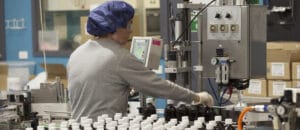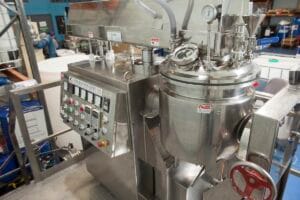
According to the Australian Medtech Manufacturing Alliance, medtech manufacturing could be Australia’s next economic powerhouse – if we can unlock local demand.
by Jack Lloyd
As Australia sees its way through global disruptions, supply chain instability, and rising healthcare costs, an opportunity is emerging: to transform our medtech manufacturing sector from underutilised potential into a key driver of national resilience and economic growth.
The Australian Medtech Manufacturing Alliance (AMMA), led by BioMelbourne Network, is stepping into this space with a clear mission: build a competitive, connected medtech manufacturing industry that is grounded in innovation, capability, and local market access.


One of the key barriers identified by AMMA is a lack of visibility; many healthcare buyers are unaware of the full range of local capabilities available.
AMMA: Aligning industry to build local capability
Launched in October 2024 with seed funding from the Victorian Government’s Department of Jobs, Skills, Industry and Regions, AMMA brings together peak industry bodies including Association of Healthcare Supply and Procurement Officers (AHSPO), Australian Manufacturing Technology Institute Limited (AMTIL), AusBiotech, Industry Capability Network (ICN) Victoria, Medical Technology Association of Australia (MTAA), MTPConnect, and Pathology Technology Australia (PTA).
The Alliance’s vision, “Better Health Made Here,” sets out to build a vibrant ecosystem that delivers affordable and locally made health technologies, strengthens supply chains, and supports economic diversification.
AMMA’s recently launched Strategic Plan focuses on three pillars:
1. Supporting Australia’s health services to better leverage local industry.
2. Building local medtech manufacturing capability.
3. Strengthening the AMMA voice to better advocate for change.
“AMMA’s initial strategic lens is firmly focused on local market access because there is a wealth of evidence that a strong market pull is an effective way to drive manufacturing outcomes,” said Dr Sarah King-Smith, AMMA lead. “We consistently hear from industry that if we bought more here, we would make more here.”
Systemic roadblocks for Australian manufacturers
Australia imports roughly 95 per cent of its medical technology, a figure that leaves our health system vulnerable and limits the growth of homegrown capability.
Medtech and biotech manufacturers are the quiet achievers in Australia’s advanced manufacturing ecosystem, many with long-established customers and export businesses. However, despite high-quality offerings, many Australian medtech small-to-medium enterprises (SMEs) find it easier to export than sell to domestic health services due to complex procurement pathways across federal, state and territory systems.
“Why is it easier for our companies to sell abroad than at home?” King-Smith asked. “It’s because we’ve historically undervalued local manufacturing and capability. It’s time to change the narrative because behind every local purchase is a healthier patient, a stronger industry, and a thriving Australia.”
In contrast, OECD nations including the USA, UK, Singapore, Canada and Korea all have policies in place to support local manufacturers through procurement frameworks that prioritise local participation – especially for early-stage companies that benefit from critical customer feedback for scaling.
Pathways to Market: Opening doors for SMEs
In July, AMMA launched the Pathways to Market program through its partner MTPConnect, providing tailored support to help SMEs position themselves for local procurement success.
This program is one of several initiatives designed to tackle procurement complexity and build long-term industry resilience.
DentaLife: A case study in local manufacturing excellence
Melbourne-based DentaLife is one example of a medtech manufacturer stepping up during a national crisis.
During the COVID-19 pandemic, the company invested in increased production capacity of their Clinicare disinfectant wipes range – also adding an instrument-grade product ensuring hospital-level infection control. Despite global shortages, DentaLife’s production line operated 24/7 with no backorders, while training up a new workforce in record time.
Yet, access to the local market remains a major challenge.
“We have an excellent product with proven efficacy, yet navigating procurement processes was incredibly challenging, and we’re waiting multiple years to enter tenders,” said Josephine Kelly, sales and marketing manager, DentaLife.
Support from ICN Victoria, the Australian Medtech Manufacturing Centre, and AMMA’s Pathways to Care has helped the company run a pre-clinical trial with Monash Health, and it is now preparing to scale sales.
“These connections formed have been invaluable in understanding the complexities and to navigate how we make an impact in the sector,” Kelly added.


Melbourne-based DentaLife is one example of a medtech manufacturer stepping up during a national crisis.
Bridging gaps across the manufacturing ecosystem
One of the key barriers identified by AMMA is a lack of visibility; many healthcare buyers are unaware of the range of local capabilities available. At the same time, manufacturers often struggle to navigate fragmented procurement processes across states and services.
In its initial phase of operations AMMA is addressing this through:
• Development of an Industry Action Plan.
• Delivery of the Pathway to Market – Medtech Capability Uplift program.
• A Better Health Made Here campaign to foster a buy local mindset in health.
“We’ve had this ecosystem breakdown because manufacturing has gone offshore. Customers have become disconnected from manufacturers,” said Jacqui Savage, chief product officer of Wavewise Analytics (Formerly Cyban), an Australian brain monitoring device company. “What we’ve needed is a concierge-like body to pull all of the disparate pieces together… AMMA is doing that.
“By connecting the core parts of the industry with health, we can strengthen capacity – and if momentum continues, accelerate commercialisation and create a larger, more mature medtech manufacturing industry like those of the USA, Germany, Switzerland, Singapore and Korea.”
Medtech as an economic driver
The medtech sector is already valued at $4.1 billion and growing, with potential to create thousands more high-value jobs across research, engineering, and advanced manufacturing. AMMA’s strategy positions medtech not only as critical to healthcare, but also as a key pillar in national economic resilience.
“If we succeed,” King-Smith said, “we’ll create diversified economic strength, greater resilience, and compelling career opportunities for our next generation.”
Get involved: Help AMMA deliver ‘Better Health Made Here’
AMMA is calling on manufacturers across Australia to:
• Share your success stories via https://www.wilam.com/amma/contact.
• Participate in programs like Pathways to Market.
• Advocate for local procurement policies in your networks.
“It’s time to rewrite our manufacturing narrative,” King-Smith said. “Let’s back our industry, celebrate our successes, and make medtech manufacturing a core driver of a healthy future for Australia.”
Learn more at www.wilam.com/amma.
SOURCE: https://www.manmonthly.com.au/medtech-manufacturing-australias-next-economic-powerhouse/
